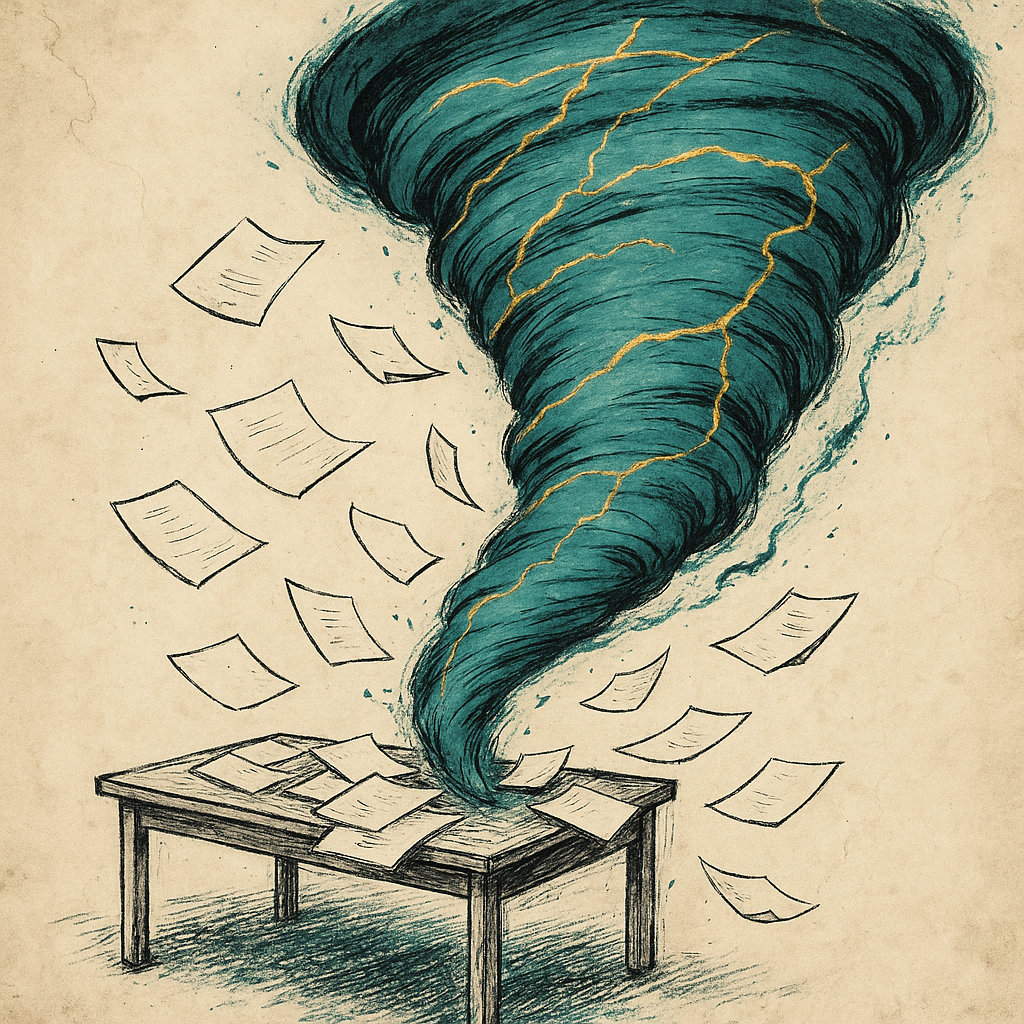
What if the Feedback isn't the Only Problem
A while back, I brought my annual review to therapy.
Not just the document—the emotions. The spiraling. The 3 a.m. racing thoughts. The feeling that something had shifted, but I didn’t know where or why. I had highlighted everything, annotated the margins, and rehearsed counterpoints in my head like I was preparing for trial.
My therapist listened for a while and then said something quiet and disarming:
“Have you ever heard of Rejection Sensitive Dysphoria?”
I rolled my eyes and said, “The last thing I need is another diagnosis.”
But something about the phrase stuck with me. I couldn’t stop thinking about it.
So, I started reading.
And everything started to make sense.
What is Rejection Sensitive Dysphoria (RSD)?
RSD is a heightened emotional response to real or perceived rejection or criticism. It’s commonly experienced by neurodivergent people, particularly those with ADHD or autistic traits. It’s not just about being “too sensitive”—it’s a brain-based response that can mirror the pain of physical injury.
For me, it looks like:
Replaying Teams messages long after I’ve hit send
-
Ruminating over vague feedback for days or weeks
-
Spiraling after I’m left out of a meeting—even accidentally
-
Doubting my value because of one poorly-worded comment
-
Feeling crushed by tone, even when the intent wasn’t harmful
https://www.creasedpuddle.co.u...
Reviews That Sparked This
I’ve had a long, successful career—over 20 years in fact. I know I’m good at my job. I’ve led complex systems, built new processes, helped teams grow. I’ve been praised for my strategy and my execution.
But a couple of particular reviews?
It was written without any meaningful feedback throughout the year.
I received the full assessment the day before the conversation took place.
There was no build-up. No coaching. No context.
Just a fully-formed document landing like a verdict.
Feedback Translation: RSD Edition
So I did what a lot of neurodivergent professionals do when something doesn’t make sense: I translated it.
Below is a compare-and-contrast table of how performance feedback was written—and how it could have been reframed to be more inclusive, clear, and supportive.
|
❌ How It Was Said |
✅ A Better Way to Say It |
|---|---|
|
“Julie needs to stop focusing on tools and start making recommendations.” |
“Julie brought forward strong tools and context. To deepen impact, the next step is translating those insights into specific, strategic recommendations.” |
|
“Julie should develop a more nimble attitude as we are a small organization.” |
“In our lean environment, flexibility is key. Let’s explore how we can adapt processes without losing the structure that supports your strengths.” |
|
“Julie wants to be everyone’s friend.” |
“Julie creates welcoming, collaborative relationships. We can also explore ways to establish boundaries that support both connection and leadership.” |
|
“Julie asks for feedback but makes it feel conversational, not direct.” |
“Julie initiates open dialogue. To strengthen feedback loops, let’s agree on clear asks and shared expectations for follow-up.” |
|
“Julie needs to be stronger in her voice to influence.” |
“Julie has thoughtful insights. Let’s identify where and how to elevate her voice for greater strategic influence.” |
|
“Julie doesn’t appear to act on feedback.” |
“We want to ensure feedback leads to visible outcomes. Let’s co-create a structure where action steps and progress are clearly communicated.” |
|
“Julie overcomplicates things and waits too long to act.” |
“Julie’s thoroughness is a strength. To stay agile, let’s identify low-risk areas where she can test ideas early and refine along the way.” |
|
“Feedback was shared anonymously because staff didn’t feel heard.” |
“Staff have expressed they didn’t feel heard. Let’s build more psychologically safe spaces where direct, respectful feedback feels welcome and effective.” |
|
“Julie uses the same tone whether speaking to staff or the Board.” |
“Julie communicates clearly and consistently. Let’s tailor messaging for different audiences—some need details, others need concise direction.” |
|
“Meetings revisit the same issues with no action.” |
“Julie’s follow-ups show commitment. Moving forward, we’ll ensure meetings have clear objectives and recap action items to track momentum.” |
If You’re Writing a Review, Here Are a Few Do’s and Don’ts:
Do:
Share feedback regularly, not just at review time
- Be specific—vague phrases can create emotional spirals
- Separate strengths from growth areas
- Ask how the employee prefers to receive feedback (written, live, recorded)
- Follow up. Clarify what you meant, and ask how it landed
Don’t:
Save up concerns and deliver them all at once
- Assume someone “should already know” if nothing was said during the year
- Use personality traits as performance critiques
- Reference anonymous feedback without support or context
- Equate “style” differences with underperformance
The Aftermath No One Sees
I’ve tried to move past it.
I’ve rewritten the words. Talked to my therapist. Collected years of positive feedback and successful outcomes as evidence that this one moment does not define me.
But the truth is:
I haven’t been able to shake it.
Not this one assessment. Not this one year.
Every meeting, I brace.
Every Teams message gets triple-checked.
Every joke I make to lighten the mood gets reviewed and re-reviewed in my head.
Every time I’m excluded from a conversation—deliberate or not—I feel the ground shift underneath me.
This isn’t just imposter syndrome.
It’s trauma. It’s the result of existing for decades in systems that weren’t built for minds like mine.
Final Thought
I’m not sharing this because I’m fragile.
I’m sharing this because I survived it. And because someone reading this right now might still be trying to survive.
If you’re a manager, a peer, or just someone who gives feedback:
- Be specific
- Be honest
- Be kind
- Be accountable
Because when feedback is clear, consistent, and compassionate?
It doesn’t just change performance.
It changes people’s lives.
Post a comment